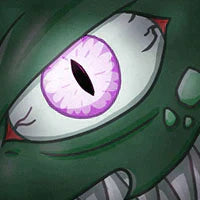1
/
of
2
Borishotch Industries
Dungeons & Dragons Bat Miniature
Dungeons & Dragons Bat Miniature
Regular price
£2.00 GBP
Regular price
Sale price
£2.00 GBP
Unit price
/
per
Couldn't load pickup availability
This is a Highly detailed miniature of a Bat for Dungeons & Dragons.
This model was created by Schlossbauer who makes amazingly accurate models of the Monster Manual creatures and provided by Commercial Licence.
In Dungeons & Dragons (D&D), a bat is a creature commonly found in many editions of the game, primarily appearing in the Monster Manual or similar bestiaries. Bats typically belong to the category of low-level monsters, often encountered in dark or underground environments such as caves, dungeons, or forests at night.
These creatures are depicted as small, flying mammals with leathery wings, sharp teeth, and keen senses suited for navigating in darkness. While individually weak, they often attack in swarms, overwhelming adventurers with their sheer numbers. Bats in D&D are usually depicted as having poor combat abilities but compensating with agility and evasiveness, making them difficult to hit with melee weapons.
In terms of stats, bats are typically portrayed as having low hit points, average speed, and moderate Dexterity scores, reflecting their nimbleness in flight. They often possess echolocation or keen senses, granting them advantages in detecting enemies or navigating through dark environments.
In combat, bats rely on their ability to swoop down on their prey, using their bite attacks to inflict minor damage and potentially transmitting diseases or poisons, depending on the Dungeon Master's discretion. While individually not threatening to experienced adventurers, encountering a swarm of bats can pose a challenge, especially if the party lacks area-of-effect spells or abilities to deal with multiple targets simultaneously.
Beyond combat encounters, bats might also serve as atmospheric elements in storytelling, signaling the presence of a nearby vampire or inhabiting a cursed forest haunted by dark magic. Dungeon Masters often utilize bats to enhance the ambiance of their adventures, adding an element of tension or foreboding to dark, eerie environments.
Overall, bats in D&D contribute to the rich tapestry of creatures adventurers might encounter in their quests, offering both combat challenges and opportunities for immersive storytelling within the game's diverse fantasy worlds.
These creatures are depicted as small, flying mammals with leathery wings, sharp teeth, and keen senses suited for navigating in darkness. While individually weak, they often attack in swarms, overwhelming adventurers with their sheer numbers. Bats in D&D are usually depicted as having poor combat abilities but compensating with agility and evasiveness, making them difficult to hit with melee weapons.
In terms of stats, bats are typically portrayed as having low hit points, average speed, and moderate Dexterity scores, reflecting their nimbleness in flight. They often possess echolocation or keen senses, granting them advantages in detecting enemies or navigating through dark environments.
In combat, bats rely on their ability to swoop down on their prey, using their bite attacks to inflict minor damage and potentially transmitting diseases or poisons, depending on the Dungeon Master's discretion. While individually not threatening to experienced adventurers, encountering a swarm of bats can pose a challenge, especially if the party lacks area-of-effect spells or abilities to deal with multiple targets simultaneously.
Beyond combat encounters, bats might also serve as atmospheric elements in storytelling, signaling the presence of a nearby vampire or inhabiting a cursed forest haunted by dark magic. Dungeon Masters often utilize bats to enhance the ambiance of their adventures, adding an element of tension or foreboding to dark, eerie environments.
Overall, bats in D&D contribute to the rich tapestry of creatures adventurers might encounter in their quests, offering both combat challenges and opportunities for immersive storytelling within the game's diverse fantasy worlds.
Share




